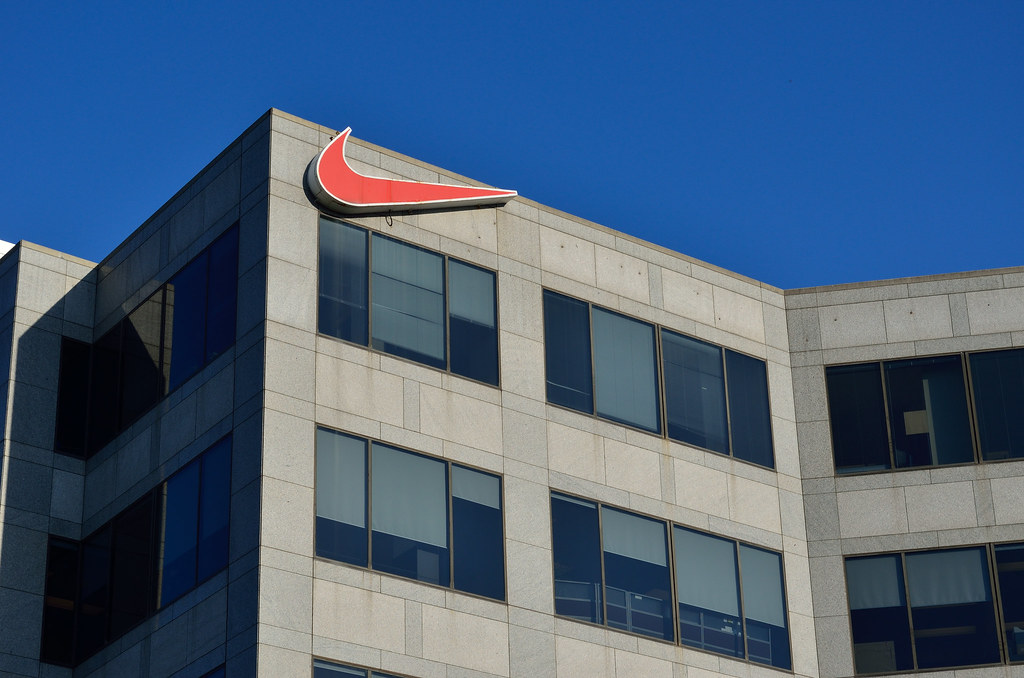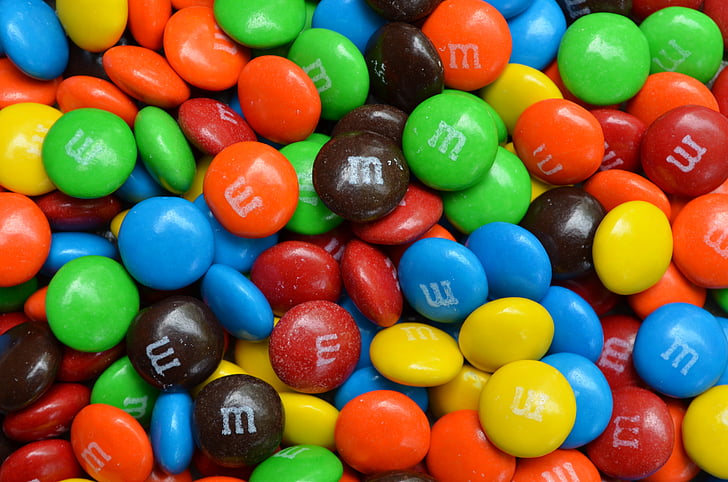
The world of advertising often delivers surprises, but rarely does a candy brand find itself at the epicenter of a raging culture war, only to orchestrate one of the most talked-about marketing stunts in recent memory. This is the curious case of M&M’s beloved ‘spokescandies,’ whose journey from beloved mascots to polarizing figures and back again offers a fascinating look into modern brand strategy, public perception, and the sheer power of internet virality.
For months, the internet was abuzz, dissecting every move by Mars Wrigley, the parent company of M&M’s, as their colorful characters navigated a landscape of outrage, redesigns, and ultimately, a triumphant return. What began with seemingly innocuous changes to a cartoon character’s footwear escalated into a national conversation, culminating in a Super Bowl advertisement that definitively declared: the M&M’s spokescandies are here to stay.
To truly understand this confectionary kerfuffle, we must rewind to about a year ago. Mars Wrigley embarked on an initiative to update the look of its M&M’s characters, aiming to make the mascots fit a “more dynamic, progressive world.” This rebranding was part of a larger corporate goal to foster “a world where everyone feels they belong,” a sentiment that, ironically, would soon spark considerable division.
Among the most significant changes was the redesign of the green M&M, a character long portrayed as “the sexy one,” often seen in high-heeled go-go boots. As part of the inclusivity drive, her iconic footwear was replaced with sneakers, and her legs were reportedly shortened to make her “less sexy.” Simultaneously, the brown M&M, who had reportedly worked for decades behind the scenes as ‘chief chocolate officer,’ traded her stilettos for more comfortable-looking pumps with lower, block heels.
These seemingly minor adjustments, particularly to the green M&M’s appearance, ignited a dual-fronted critique. On one side, some feminist activists voiced disapproval, suggesting that “being hot isn’t a problem unto itself.” On the other, far-right conservatives seized upon the changes, framing them as yet another battleground in the ongoing “culture wars.”
Among the most vocal critics was Fox News host Tucker Carlson, who dedicated a segment on his show, *Tucker Carlson Tonight*, in January 2022, to condemn the rebrand. Carlson declared that “M&M’s will not be satisfied until every last cartoon character is deeply unappealing and totally androgynous,” adding, “Until the moment when you wouldn’t want to have a drink with any one of them. That’s the goal. When you’re totally turned off, we’ve achieved equity. They’ve won.” He found the M&M’s without heels “deeply unappealing” and claimed he “no longer wanted to date them (or at least, no longer wanted to drink with them).”
The controversy simmered for months, only to boil over again in September 2022, when M&M’s introduced a new female character, Purple. This peanut M&M, the first new color in over a decade, was designed to “represent acceptance and inclusivity,” debuting with a song titled “I’m Just Gonna Be Me.” It is worth noting that while Purple joined the spokescandy lineup, no purple candies were actually added inside M&M packages.
Conservatives were quick to react, immediately suggesting that the new purple candy must be transgender, and the candies were labeled “woke.” The brand’s efforts to embrace inclusivity, which began with modest shoe changes, were now being interpreted through a highly politicized lens, becoming a lightning rod for broader societal debates.
Product on Amazon: M&M’S WORLD Green Milk Chocolate Candy,2lbs of M&M’S Resealable Pack for Candy Bars,Christmas,St. Patrick’s Day Parties,Birthdays,Graduations,Dessert Tables & DIY Party Favors,Bulk Chocolate
Brand: Visit the M&M’S WORLD Store
Price: 34.86 USD
Rating: 4.6 Total reviews: 4509
Item Form: Chocolate
Occasion: Christmas, Graduation, Holiday, Father’s Day, St. Patrick’s Day
Chocolate Type: Milk
Flavor: Green
Features:
1. Celebrate Colorful Chocolate Fun Celebrate with M&M’S Green Milk Chocolate Candy for vibrant cupcake decorations, birthday decor, and candy & chocolate gifts that add a special touch to any event
2. Imagine Your Candy Bowl With Loads Of Sweetness Suitable for guessing games, cupcake and cookie decorations, or party decorations, M&M’S chocolate candy brings sweetness to any party from birthdays to holidays
3. Fun And Exciting For Diy Parties Use these green M&M’S candies for DIY party surprises or bagged candy for St. Patrick’s Day, birthdays, and unforgettable celebrations
4. Freshness And Quality Keep your M&M’S chocolate bulk fresh by storing them at room temperature and away from direct sunlight to maintain their quality and appearance
5. 2 Pounds To Make Your Party Favors Fun With 2 lbs of chocolate bulk, these M&M’S add to party favors and delights
Shopping on Amazon >>

The final straw for some commentators seemed to come in December when M&M’s introduced all-female packaging to promote International Women’s Day. This limited-edition pack featured the three female M&Ms – Green, Brown, and Purple – with a pledge to donate one dollar from each pack, up to $500,000, to female-empowerment organizations. Despite the seemingly innocuous nature of this initiative, one Fox anchor suggested that this “feminist pack” emboldened China.
Carlson revisited the topic on his show in January 2023, reigniting the conversation with renewed fervor. He stated, “Woke M&M’s have returned,” and claimed, “The green M&M got her boots back, but apparently is now a lesbian, maybe? And there is also a plus-sized, obese purple M&M.” He also took aim at the orange M&M, asserting the “always-nervous character was said to have anxiety” and was “becoming a poster boy for the mental-health crisis.”
It is important to note that Mars Wrigley had not made any recent changes to the M&M characters at the time of Carlson’s January 2023 remarks. Carlson’s critique referenced images from 2015 and the September 2022 introduction of Purple, none of which constituted new information. Yet, his comments were enough to send the controversy spiraling back into the public eye.
The renewed backlash quickly found a new home on social media platforms like TikTok, where users began creating comical videos lip-syncing to Carlson’s audio clips. One such audio clip was used over 13,000 times within days of its publication on January 12, demonstrating the immense viral potential of these culture-war narratives.

Then, on Monday, January 23, Mars Wrigley made a bombshell announcement: it would be pulling the ‘spokescandies’ indefinitely and replacing them with actress and comedian Maya Rudolph. The statement, tweeted from the official M&M’s account, read, in part: “In the last year, we’ve made some changes to our beloved spokescandies. We weren’t sure if anyone would even notice. And we definitely didn’t think it would break the internet. But now we get it — even a candy’s shoes can be polarizing.”
Maya Rudolph expressed genuine enthusiasm for her new role, telling Today, “I am a lifelong lover of the candy and I feel like it’s such an honor to be asked to be part of such a legendary brand’s campaign.” Her appointment seemed to signal a definitive shift away from the polarizing animated characters towards a human spokesperson.
At the time of the announcement, speculation ran rampant. Was this a genuine retreat from the controversy, or a clever marketing ploy? Many observers immediately drew parallels to Planters’ “death” of Mr. Peanut and his subsequent rebirth as Baby Nut, suggesting a calculated brand stunt ahead of the Super Bowl. As it turned out, their instincts were largely correct.
Just five days after Mars Wrigley announced its decision to pull the candy mascots, on Friday, January 27, The New York Times confirmed the characters would be returning for the upcoming Super Bowl LVII, and more importantly, that they were “here to stay.” A representative for Mars Wrigley stated, “Rest assured, the characters are our official long-term spokescandies,” explaining that they were simply “currently on a break.”
Product on Amazon: Always Discreet Adult Incontinence Underwear for Women and Postpartum Underwear, S/M, Up to 100% Bladder Leak Protection, 84 Count (Packaging May Vary)
Brand: Always Discreet
Binding: Health and Beauty Product Group: Drugstore
Price: 49.69 USD
Rating: 4.5 Total reviews: 16914
Number of Items: 1
Color: Peony/Pink
Incontinence Protector Type: Adult Incontinence Underwear
Age Range (Description): Adult
Features:
1. UP TO 12 HOURS OF DRYNESS PROTECTION Day & Night
2. UP TO ZERO LEAKS, ZERO ODORS to keep you dry and comfortable
3. UNIQUE, SUPER ABSORBENT CORE turns liquid to gel to absorb bladder leaks in seconds
4. EXCLUSIVE ODORLOCK TECHNOLOGY neutralizes odors instantly and continuously
5. COTTONY SOFT 4-WAY STRETCH FABRIC forms to your body like underwear
Shopping on Amazon >>

The initial “indefinite pause” announcement had indeed succeeded in drumming up enormous public interest. The original tweet from M&M’s was quote-tweeted over 22,600 times, becoming the standout news of the day. This level of engagement indicated that Mars Wrigley had, in fact, orchestrated a massive public relations win, turning a contentious debate into widespread Super Bowl hype. As one commentary aptly put it, if someone asks who “won” the “culture wars,” you could confidently say “the Mars Wrigley press relations team did.”
The Super Bowl commercial itself was a quirky revelation. Maya Rudolph playfully pretended to announce a switch from the classic M&M’s chocolate candies to “Ma&Yas clam candies,” showcasing bizarre images of chocolate-dipped clams. Meanwhile, the red M&M spokescandy appeared in the background holding a sign begging for help, adding to the comedic absurdity. Near the end of the game, a very short ad proclaimed, “They’re back for good,” definitively signaling the mascots’ return.
This grand reveal confirmed what many suspected: the entire saga was a well-executed, if somewhat audacious, publicity stunt. Mars Wrigley’s initial statement began with “America, let’s talk,” setting a stage for national dialogue that ultimately served to amplify their Super Bowl presence. The move effectively leveraged the prior internet controversy, hoping the “sheer weirdness” of the clam candy idea would highlight the “switcharoo” as a big, “melt-in-your-mouth joke.
Beyond the immediate buzz, this episode offers a valuable case study in brand activism and its inherent risks. Companies are increasingly expected to take stances on social issues, driven by consumer demand. Surveys, for instance, indicate that a significant majority of young people desire brands to engage with social issues. One survey found that 87% of people would purchase a product because a company advocated for an issue they cared about. Conversely, 76% would refuse to purchase products or services from a company supporting an issue contrary to their beliefs.

Brands like Nike have famously supported social causes, such as Colin Kaepernick’s protests against racial injustice, with their “For Once, Don’t Do It” campaign. Patagonia famously used its website to directly criticize the Trump administration, proclaiming “The President Stole Your Land.” Even Tampax faced criticism for its inclusive advertising of tampons for “people who menstruate.” In this context, M&M’s shoe preferences for its animated candies seem comparatively innocuous.
Marketing experts have weighed in on Mars Wrigley’s strategy. Tim Calkins, a marketing professor at Northwestern University’s Kellogg School of Management, suggested that M&M’s “stumbled into a more political debate than they had hoped to,” noting their “relatively subtle changes aimed at inclusivity didn’t seem like they were designed to spark much controversy, if any.” He observed that brands in such a predicament typically have “only two ways you really can play it here. Either you have to back away from the characters, or you have to stand up and really get into a fight.
Mars Wrigley Chief Marketing Officer for North America, Gabrielle Wesley, maintained that the decision to bring in Maya Rudolph was “not a reaction to but rather is in support of our M&M’s brand” and had been “in the works for a while.” This suggests a pre-planned strategy, though its execution was undoubtedly amplified by the unexpected intensity of the backlash.

Other experts offered varying perspectives on the brand’s moves. Geraldo Matos, an associate professor of marketing at Roger Williams University, cautioned that by temporarily pulling the candies, M&M’s might have “placed themselves smack dab in the middle of upsetting both parties.” Customers might question whether the brand abandoned its commitment to inclusivity. However, Lauren Labrecque, an associate professor of marketing at the University of Rhode Island, offered a more optimistic view, predicting the characters’ swift return and that “people — especially M&M’s fans — will have all forgotten what even the controversy was, and will be very welcoming.” She characterized the situation as “so inconsequential” on the spectrum of brand controversies, ultimately expecting it to be “a net positive.”
Historically, M&M’s has always used its characters with varying intensity. They’ve been around since the 1950s, sometimes heavily featured, sometimes less so. This isn’t the first time a Super Bowl ad has played with the removal and return of a beloved mascot, drawing parallels to Planters’ Mr. Peanut and Bud Light’s Bud Light Knight. Such precedents suggest a calculated, if risky, playbook at work.
Ultimately, the M&M’s spokescandies saga became a bizarre yet compelling spectacle, demonstrating the profound intersection of commerce, culture, and online virality in the 21st century. What started as a corporate push for inclusivity, albeit with peculiar character redesigns, morphed into a far-right talking point, a TikTok trend, and finally, a Super Bowl marketing triumph. It underscores how even the seemingly most trivial details—like a candy’s shoes—can become symbolic battlegrounds in the sprawling landscape of contemporary public discourse.
As the M&M’s spokescandies now definitively reclaim their place at the heart of the brand, their journey serves as a vibrant, if unconventional, testament to the enduring power of brand mascots and the unpredictable nature of consumer engagement in an increasingly polarized world. It’s a reminder that sometimes, the sweetest victories are those that emerge from the most unexpected controversies, proving that even a candy can stir up a delicious, albeit complicated, stir.



